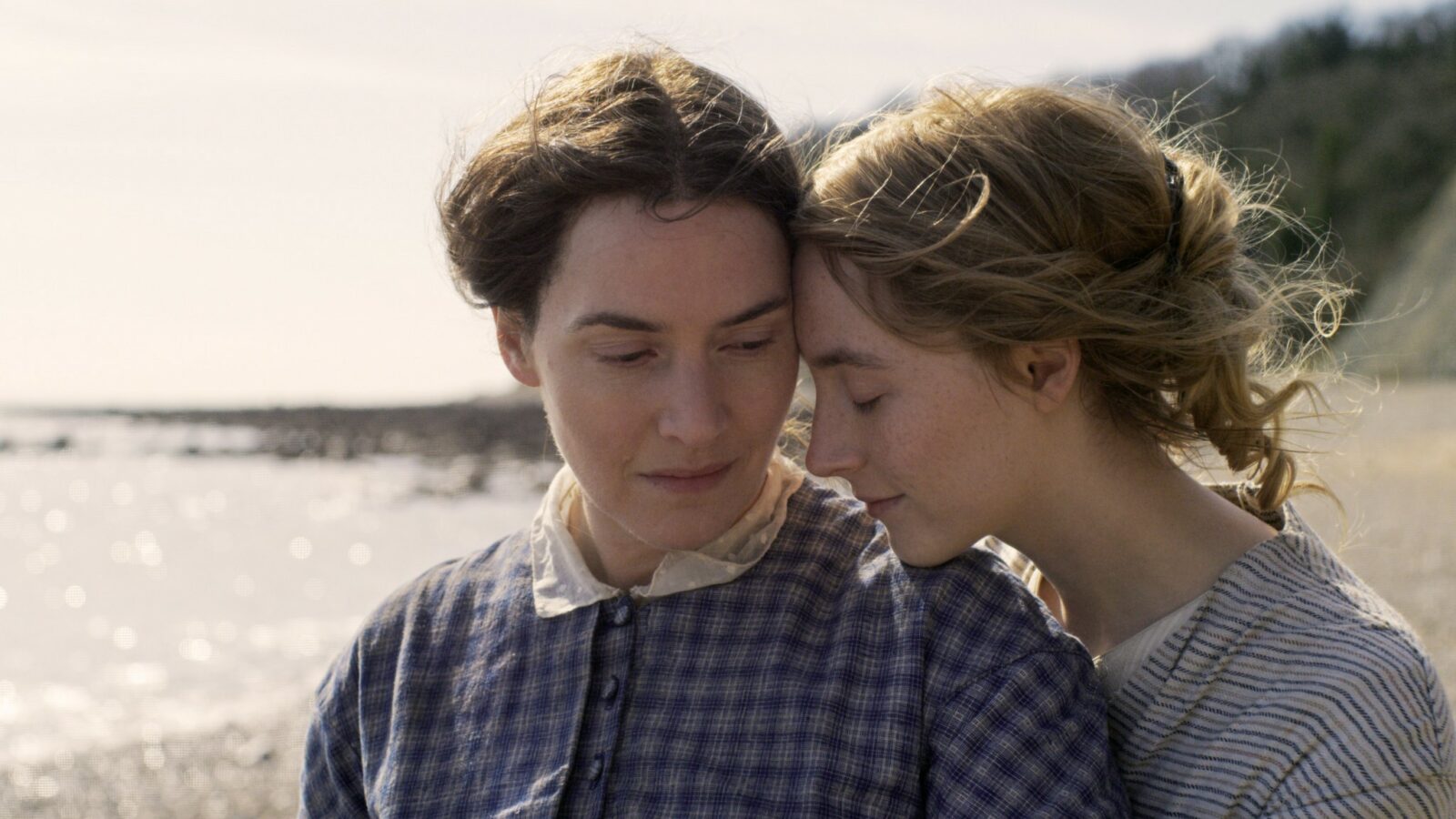Francis Lee’s Ammonite is a film full of contradictions, both within and without its underlying story. It’s a lesbian romance with a mostly female cast, yet it’s written and directed by a man (and yes, I have to acknowledge that I, myself, am a straight man writing this review). It’s a lesser throwback compared to its New Queer Cinema contemporaries, yet its prestige cast helps further the universal appeal of these films. And its two central characters are both framed to be limited by society in their repression, yet the message is in part a referendum on changing oneself for others or the world at large. No matter how you crack it, Ammonite looks and feels like a fossil, unable to be fully analyzed or understood on its own, ambiguous terms.
Kate Winslet stars as the real-life Mary Anning, a self-taught paleontologist who lives with her mother alongside the isolated coastline of Lyme Regis in 1840s England. Now past middle age, Mary’s glory days are far behind her, but she nevertheless whittles the years away hunting for new fossils she can sell to tourists. Mary’s passion for her craft isn’t immediately obvious, but to Winslet’s credit, the work ethic in all of its stodgy, tedious effort is what sells this woman’s dimensions, particularly as the film progresses.
It’s not long before Mary finds herself caring for a young, depressed woman named Charlotte (Saoirse Ronan), whose rich and uncaring husband has temporarily left her in Lyme Regis while on a scientific, European tour. The two women are brought together here by circumstance, as Mary only relents to this arrangement after being offered a sizable payment. But it isn’t long before Charlotte and Mary strike up a bond that grows into something neither of them seem prepared to grapple with existentially.
Ammonite likely avoids as many tiresome tropes as it falls into. At its worst, it falls into yet another rabbit hole of the pained, forbidden love story between two people who found each other at the wrong time in history. Fortunately, the film manages to sidestep what usually makes films like these come off as one-note in their heightening of drama for the sake of taboo sensationalism, rather than heartfelt, investing character studies. The problem is that in its attempt to do something new and refreshing with its characters, Ammonite mostly whiffs in execution.
The idea behind this central romance certainly has potential. Both women have distinct, individual identities waiting to come out, but part of what brings them together is the discovery of what these two souls from starkly different backgrounds surprisingly have in common. Both women are essentially introverts, but like most introverts, this doesn’t mean they’re incapable of showing outward affection. Lee, who wrote and directed the film, excels here at exploring the ways in which human beings decide when and where to exhibit their more outward selves, without breaking the integrity of who they really are. The turns and quirks in Mary and Charlotte’s personalities come through authentically, so the second half of Ammonite is easily the film at its best.
It’s just a shame that Ammonite elects to tell this type of story in one of the most uninteresting ways possible. It’s clearly a choice to showcase the scenery as drab and uninviting early on, because it does plenty to sell the audience on Mary’s closed, uninviting mindset. As the film works through its paces, it’s not far-fetched to expect the cinematography to change as drastically as she does, but the visual storytelling goes from wide, open spaces (boring as they are to look at) into mostly closed, low-lit spaces, the only locations where this romance can truly blossom. And even then, the film’s more explicit, sexual scenes are treated to be more titillating for the audience than they are emotionally fulfilling for the characters. The result is a film that feels more at odds with itself than it does with 1840s society.
The film also elects to bring up a conversation about age differences in same-sex relationships, which is of course a fruitful area for New Queer Cinema to continue investigating. But the exploration here is embarrassingly surface-level, particularly for cinephiles who’ve seen this topic handled far more thoughtfully in films as recent as this year’s Clementine. There’s lip service, certainly, in the form of an older woman (Fiona Shaw) who once had a traumatic effect on Mary, a development that ultimately undercuts her agency in an effort to succinctly explain away a lifetime of regrets. Yes, there’s certainly a way to illustrate how a single incident can affect a person for many years, but to do so in a callous, fleeting way like this betrays what I would consider the point of the film’s central romance.
Despite being competently made with against-type performances coming through when needed, Ammonite‘s mediocrity lies in its insistence on the bare minimum, particularly during a time when New Queer Cinema is experiencing a particularly sharp creative surge, irreverent of awards that can be won in February and instead focused on how these stories can service the people they’re representing, and teach people outside of these communities something truly human and universal. Compared to the films that came before it, Ammonite will likely stay buried for the foreseeable future.
Advertisement
Advertisement
